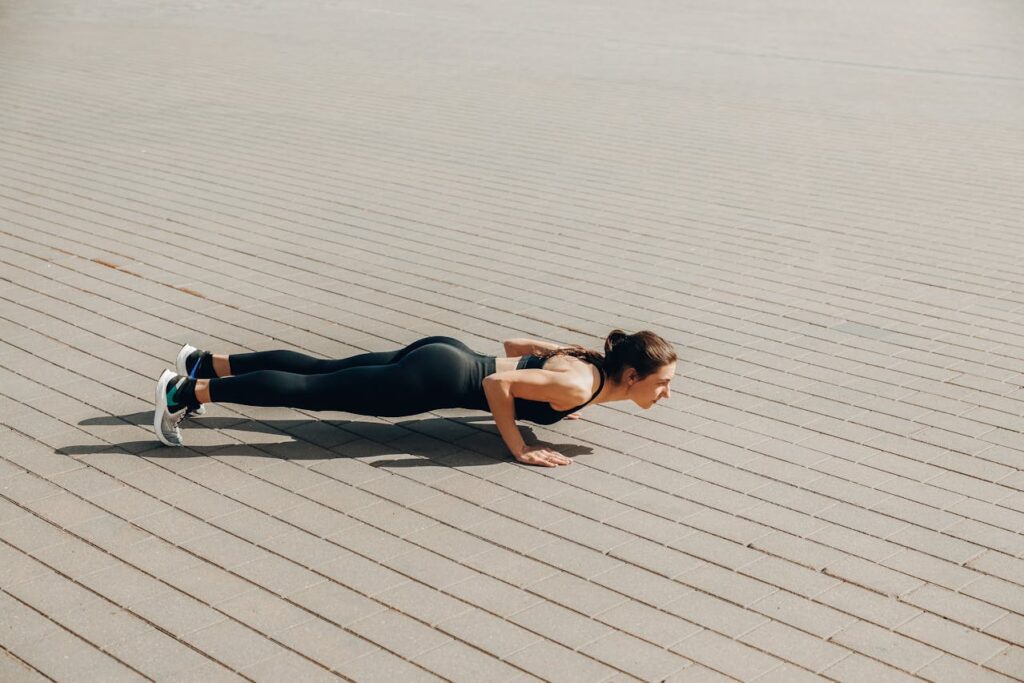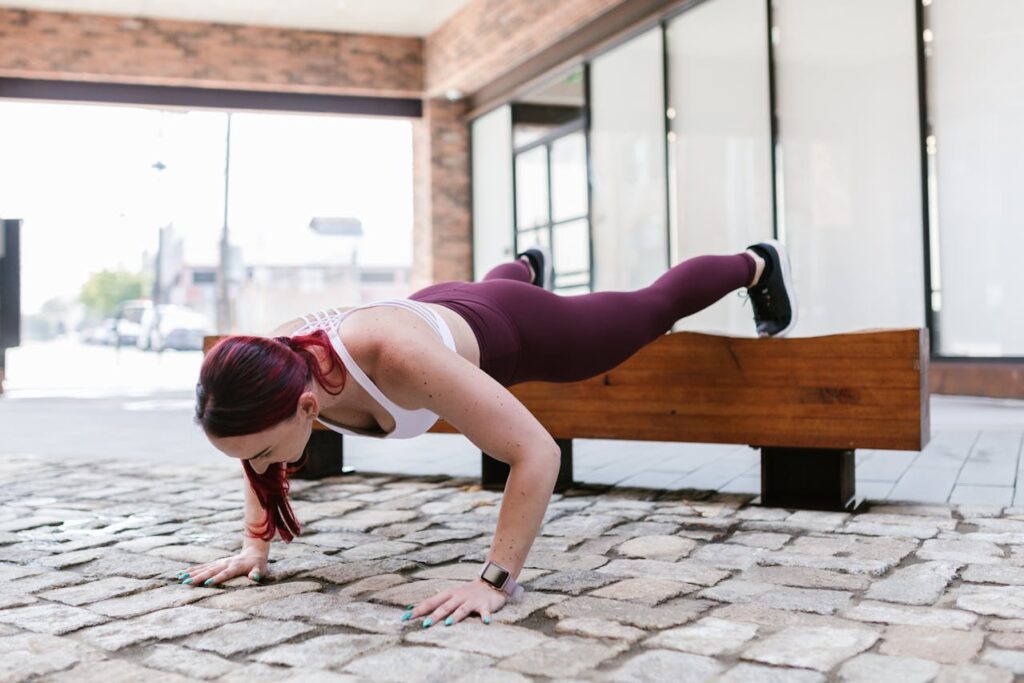In this article, we dive into the ultimate guide to push ups workout.
Table of Content:
What are push ups?
Push-ups are a classic exercise that has stood the test of time. From military training to fitness routines in gyms around the world, this bodyweight exercise is celebrated for its simplicity and effectiveness. Whether you’re a beginner or a seasoned athlete, push-ups can be adapted to suit any fitness level and offer a plethora of benefits.
Benefits of Push-Ups
- Full-Body Workout: While push-ups primarily target the chest, shoulders, and triceps, they also engage the core, back, and even the legs. This makes push-ups a highly efficient exercise for overall strength and conditioning.
- No Equipment Needed: One of the greatest advantages of push-ups is that they require no equipment. This makes them accessible to anyone, anywhere, whether you’re at home, traveling, or in the gym.
- Functional Strength: Push-ups mimic natural movement patterns, helping to build functional strength that translates into everyday activities. This can improve overall athletic performance and reduce the risk of injury.
- Scalability: Push-ups can be modified to suit all fitness levels. Beginners can start with wall or knee push-ups, while advanced practitioners can increase the difficulty with variations like decline push-ups, plyometric push-ups, or one-arm push-ups.
- Improves Posture: By strengthening the muscles of the upper body and core, push-ups can help improve posture and reduce the likelihood of developing musculoskeletal issues related to poor alignment.
How to do a push up
Executing a push-up with proper form is crucial to maximize benefits and prevent injury. Here’s a step-by-step guide:

- Starting Position: Begin in a plank position with your hands placed slightly wider than shoulder-width apart. Your body should form a straight line from your head to your heels.
- Engage Your Core: Tighten your abdominal muscles to keep your body rigid. Avoid letting your hips sag or rise too high.
- Lowering Phase: Slowly bend your elbows to lower your body toward the ground. Keep your elbows at a 45-degree angle relative to your torso. Your chest should touch the ground or come close to it.
- Pushing Phase: Push through your palms to extend your elbows and return to the starting position. Ensure your body remains in a straight line throughout the movement.
- Breathing: Inhale as you lower your body and exhale as you push up.
Common Mistakes to Avoid
- Sagging Hips: Allowing your hips to drop can strain your lower back. Maintain a strong core to keep your body aligned.
- Flared Elbows: Keep your elbows at a 45-degree angle to protect your shoulders from unnecessary stress.
- Incomplete Range of Motion: Ensure you lower your body until your chest nearly touches the ground for a full range of motion and maximum muscle engagement.
- Hand Placement: Placing your hands too wide or too narrow can reduce effectiveness and increase the risk of injury. Aim for shoulder-width apart.

Push-Up Types
To keep your workout challenging and engaging, incorporate different push-up variations:
- Knee Push-Ups: Ideal for beginners, these reduce the load by placing the knees on the ground.
- Incline Push-Ups: Performing push-ups with your hands on an elevated surface makes them easier and reduces strain on the wrists.
- Decline Push-Ups: Elevating your feet increases the difficulty by shifting more weight onto your upper body.
- Diamond Push-Ups: Bringing your hands together under your chest targets the triceps more intensely.
- Plyometric Push-Ups: Adding a clap or push-off at the top of the movement builds explosive power.
Push-Ups into Your Routine
Push-ups can be integrated into various workout routines, whether you’re focusing on strength training, HIIT (High-Intensity Interval Training), or endurance. Here are a few ways to incorporate push-ups:
- Warm-Up: Use push-ups as part of your dynamic warm-up to activate your muscles.
- Circuit Training: Include push-ups in a circuit with other bodyweight exercises for a full-body workout.
- Strength Training: Combine push-ups with weightlifting to balance your upper body routine.
- Cool Down: Finish your workout with a set of push-ups to maximize muscle fatigue and endurance.
Conclusion
Push-ups are a versatile and effective exercise that should be a staple in any fitness regimen. With their numerous benefits, ease of modification, and ability to be performed anywhere, push-ups offer a comprehensive workout for both beginners and advanced athletes. Remember to focus on proper form to avoid injury and maximize results, and don’t hesitate to experiment with variations to keep your routine fresh and challenging.


